Let's talk Neapolitan Mastiffs
“Massive” and “wrinkly” may be the adjectives that spring to mind when you first encounter a Neapolitan Mastiff but once you get to know this lovely breed, you’ll be adding “affectionate”, “gentle” and “good-natured” to the list. These huge, majestic-looking dogs come from southern Italy and date their origins back thousands of years. Nowadays, once trained they make placid family pets—not to mention loyal guard dogs as they’re naturally wary of strangers.
Official name: Neapolitan Mastiff
Other names: Mastino Napolitano, Italian Mastiff
Origins: N/A
Drooling tendencies
5 out of 5Shedding Level
3 out of 5Energy level*
3 out of 5Compatibility with other pets
2 out of 5Warm weather?
2 out of 5Suited to apartment living
2 out of 5Family pet?*
5 out of 5Can stay alone
1 out of 5
| Male | Female |
|---|---|
| Height | Height |
| 65 - 75 cm | 60 - 68 cm |
| Weight | Weight |
| 60 - 70 kg | 50 - 60 kg |
| Life stages | |
|---|---|
| Adult | |
| 8 months to 2 years | |
| Mature | Senior |
| 2 to 5 years | From 5 years |
| Baby | |
| Birth to 2 months | |
Drooling tendencies
5 out of 5Shedding Level
3 out of 5Energy level*
3 out of 5Compatibility with other pets
2 out of 5Warm weather?
2 out of 5Suited to apartment living
2 out of 5Family pet?*
5 out of 5Can stay alone
1 out of 5
| Male | Female |
|---|---|
| Height | Height |
| 65 - 75 cm | 60 - 68 cm |
| Weight | Weight |
| 60 - 70 kg | 50 - 60 kg |
| Life stages | |
|---|---|
| Adult | |
| 8 months to 2 years | |
| Mature | Senior |
| 2 to 5 years | From 5 years |
| Baby | |
| Birth to 2 months | |
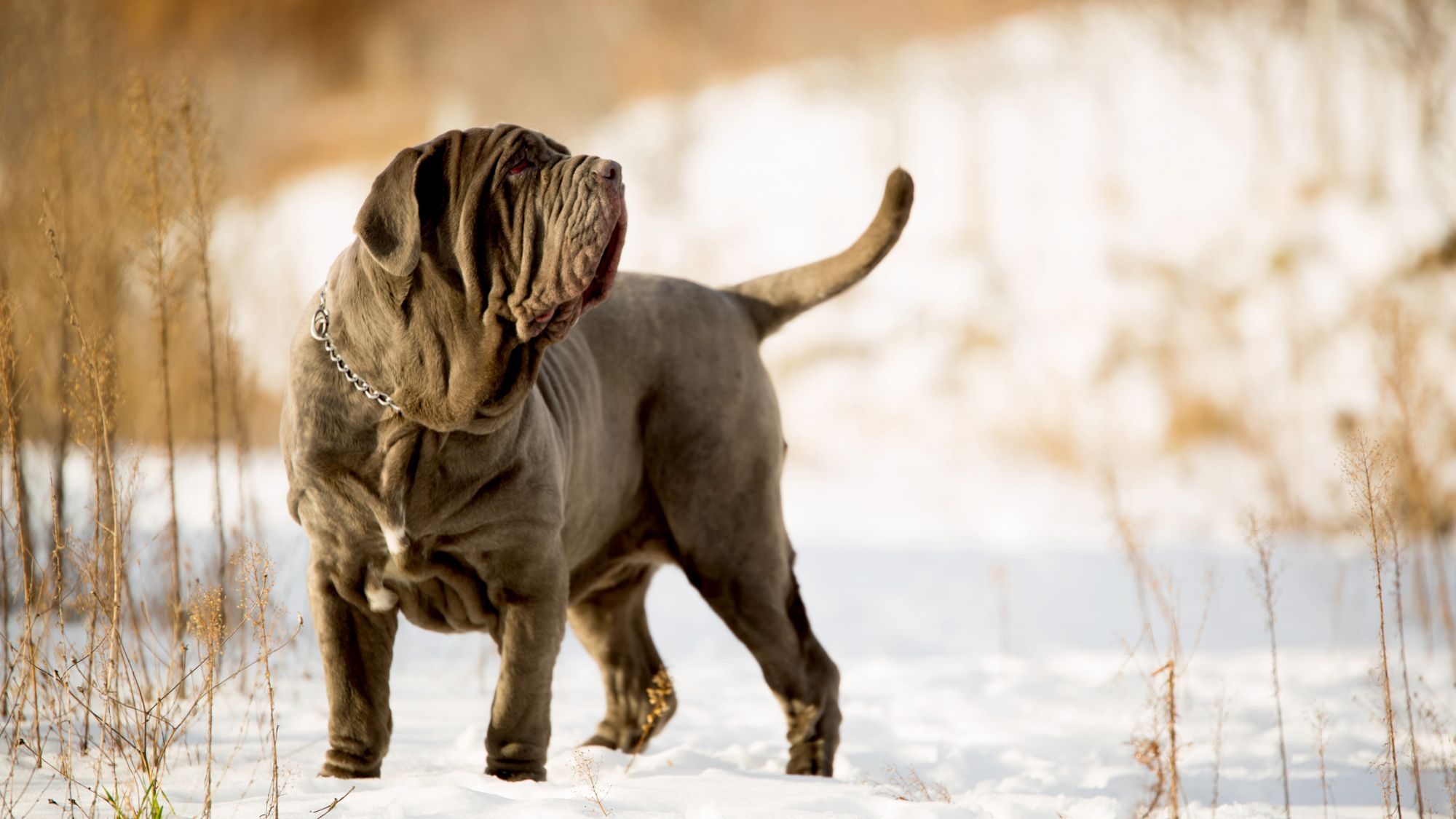
Get to know the Neapolitan Mastiff
All you need to know about the breed
Loyal, affectionate and placid Neapolitan Mastiffs – “Neos” to their friends – make a wonderful addition to any family. Well … any family that has space for these outsize dogs to spread out their huge limbs and that doesn’t mind a bit (okay, a lot) of drool on the soft furnishings.
That drooling may be the only real downside to owning one of these majestic dogs, which hail from southern Italy and are instantly recognisable, with their extravagantly wrinkly appearance and distinctive lumbering gait.
Despite their huge size, Neapolitan Mastiffs do not need a huge amount of exercise – as long as they have regular walks or a garden or yard to patrol, they are content to loll around inside, staying close to their human families.
Although fans of the Neapolitan Mastiff know that once trained, they are big softies, to the uninitiated their sheer size means they can look quite intimidating – that has led to the breed carving out quite the niche as guard dogs, a role they are well-suited to, with their reputation for being loyal to their own humans but wary of strangers.
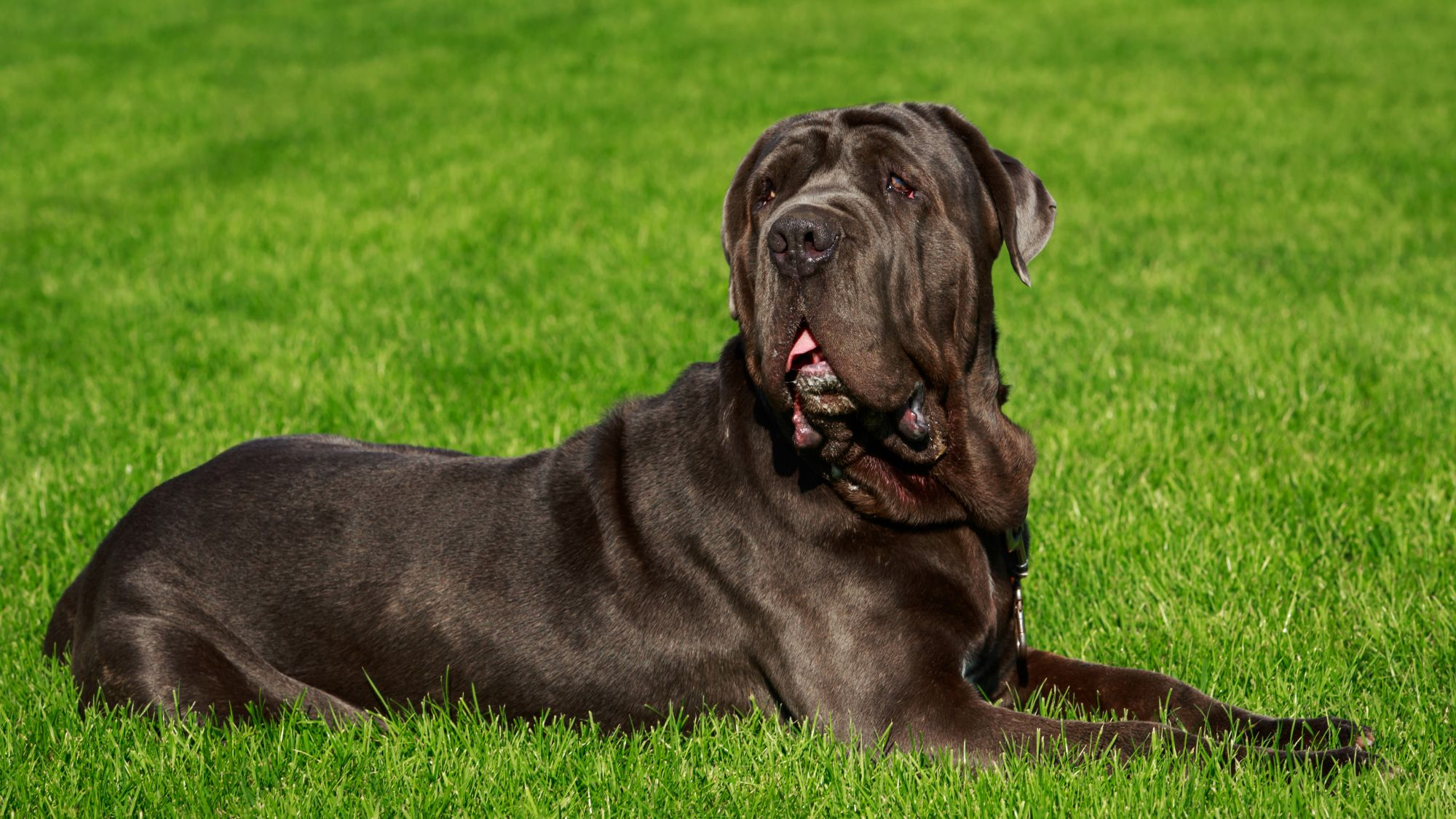
2 facts about Neapolitan Mastiffs
1. Harry Potter and the Neapolitan Mastiff
After thousands of years of existence, the Neapolitan Mastiff breed’s moment of international fame, surprisingly, came in the early 2000s, when the breed was chosen to embody the imposing but timid-natured Fang, canine companion to half-giant, half-wizard Rubeus Hagrid in the Harry Potter films.
2. WHaM!
WHaM stands for Wrinkles, Head and Mass—the acronym coined to help dog show judges known what to look out for when the Neapolitan Mastiff was a newly recognised breed in the US. Yes, it’s also the name of the 1980s pop group behind such hits as Wake Me Up Before You Go-Go but there’s no connection (although the Neapolitan Mastiff’s reputation for drooling gives the hit single Careless Whisper something of a new resonance).
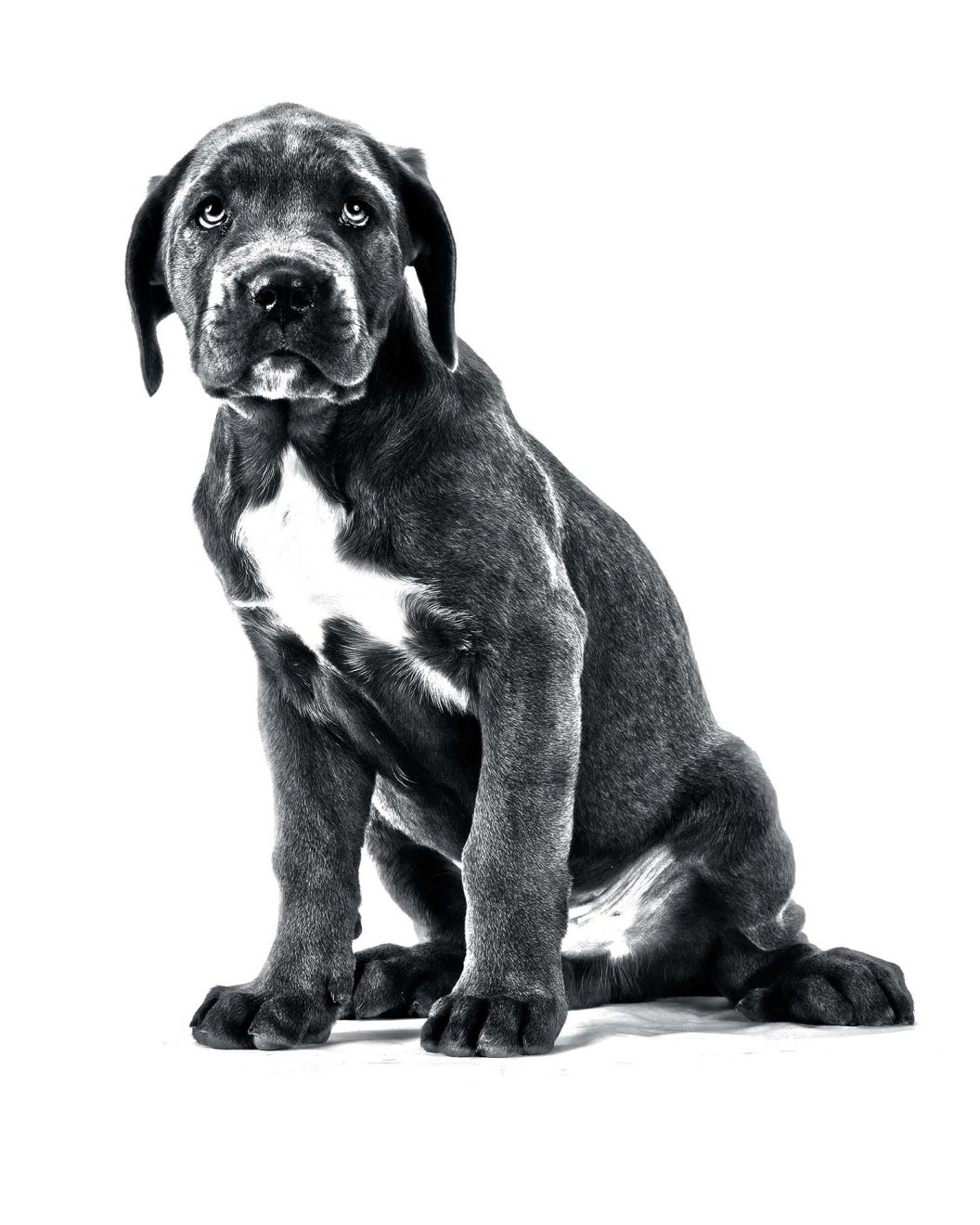
History of the breed
Neapolitan Mastiffs are undoubtedly an ancient breed – their distant ancestors are thought to date back to around 3,000 BC. The forerunners of the breed as we know it today are thought to be the result of ancient crosses between giant dogs from Europe and short haired breeds from Asia–masterminded by Alexander the Great, according to some versions of the story. The Neapolitan Mastiff breed was present in Italy during the Roman Empire, where these noble canines were put to use as guard dogs, war dogs and even as part of gladiatorial combats. Thankfully, for these gentle canines, those fighting days are well and truly over.
The breed has evolved into a sturdy and reliable guardian of homes and a much-loved companion of families. Despite its ancient origins, the Neapolitan Mastiff breed only began to be bred in an organised way in Italy after the second world war, with a standard set out in 1948, recognition by the Fédération Cynologique Internationale in 1949 and recognition by the American Kennel Club, finally, in 2004.
From head to tail
Physical characteristics of Neapolitan Mastiffs
1.Head
2.Coat
3.Body
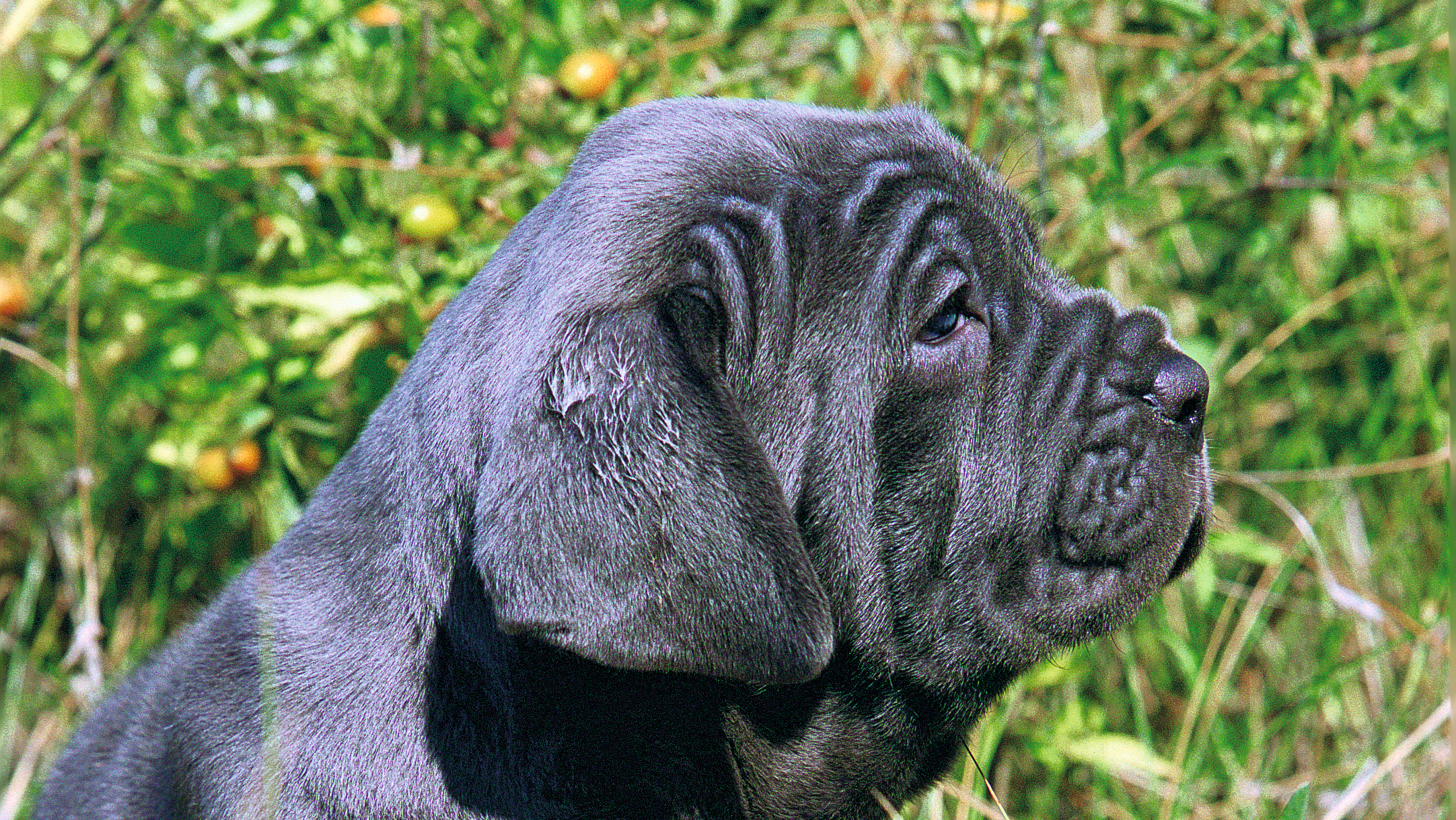
Things to look out for
From specific breed traits to a general health overview, here are some interesting facts about your Neapolitan Mastiff
Cherry eye
Neapolitan Mastiffs are prone to cherry eye, a condition in which tissue in the corner of the eye becomes red (hence the name) and inflamed, which can cause the dog discomfort. It is most commonly corrected through surgery. Neapolitan Mastiffs are a brachycephalic (short-nosed, flat-faced) breed which makes them prone to certain skin, eye and breathing problems as well as intolerant to hot temperatures. Regular check-ups with the vet are a good idea to make sure your dog stays in the best possible health.
Beware of bloat
In common with other large breeds, Neapolitan Mastiffs can suffer from gastric dilatation-volvulus, more commonly known as bloat, a serious, even life-threatening condition believed to be triggered by eating or drinking large quantities quickly and then exercising. You should get to know the signs – they include a bloated abdomen, restlessness, retching, drooling and whining or sudden stillness – and know that immediate help from a veterinarian is needed.
Healthy diet, healthier dog
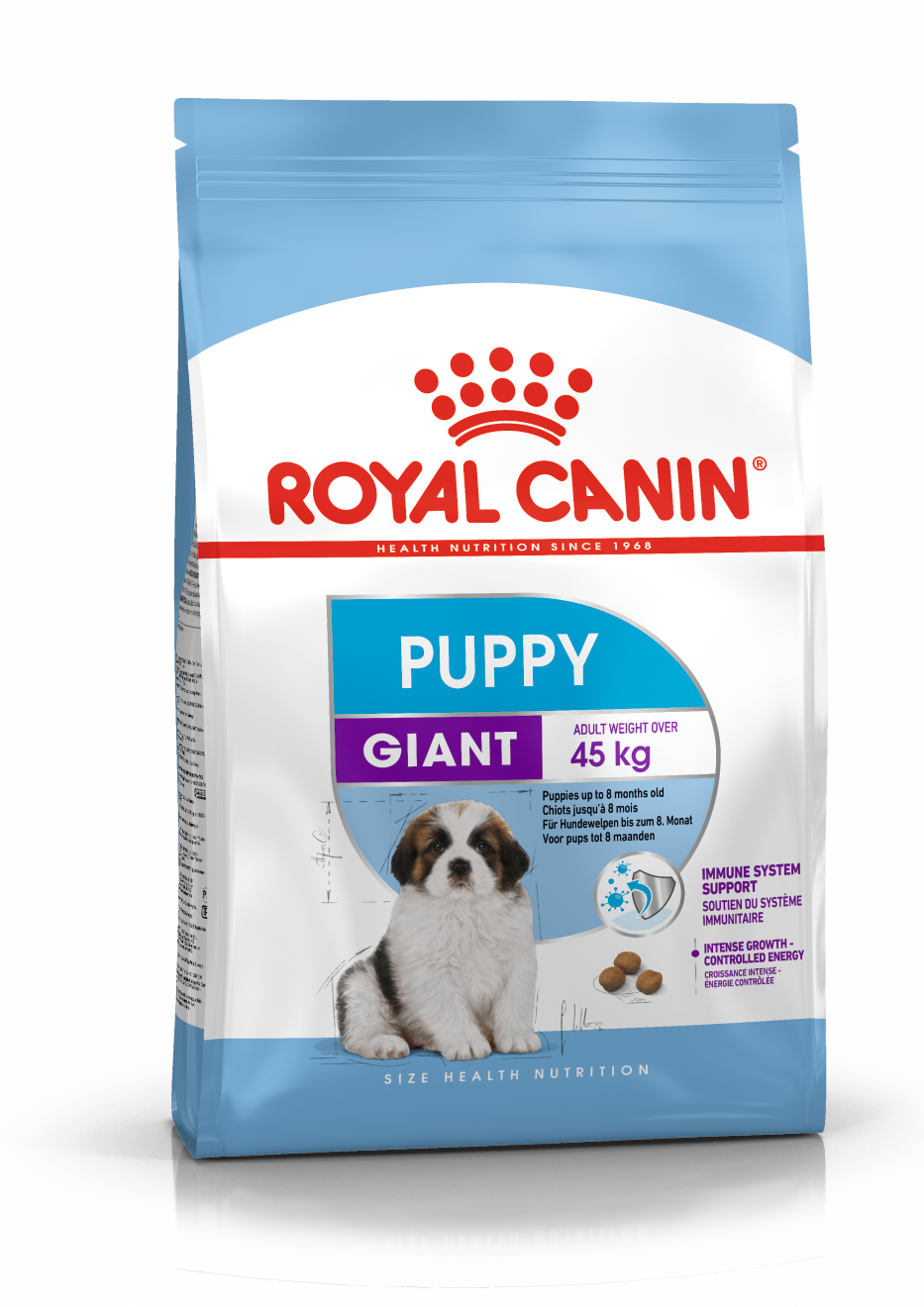
When choosing food for a Neapolitan Mastiff, there are many factors to consider: their age, lifestyle, activity level, physical condition, and health including potential sickness or sensitivities. Food provides energy to cover a dog’s vital functions, and a complete nutritional formula should contain an adjusted balance of nutrients to avoid any deficiency or excess in their diet, both of which could have adverse effects on the dog. As giant-sized breed dogs have a higher risk of a condition called gastric dilatation volvulus (GDV), where the stomach becomes overstretched and rotated because of excess gas, usually caused by overfeeding during a meal, it’s recommended to split the daily allowance into three meals for puppies and try to keep this routine into their adult years.
Clean and fresh water should be available at all times to support good urinary regularity. In hot weather and especially when out exercising, bring water along for your dog’s frequent water breaks. Energy intake may also have to be adapted to the climatic conditions. A dog that lives outdoors in winter will have increased energy requirements.
The following recommendations are for healthy animals. If your dog has health problems, please consult your veterinarian who will prescribe an exclusively veterinary diet.
A Neapolitan Mastiff puppy’s requirements, in terms of energy, protein, minerals, and vitamins, are greater than those of an adult dog. They need energy and nutrients to maintain their body, but also to grow and build it. During their growth, Neapolitan Mastiff puppies’ immune system develops gradually. A complex of antioxidants – including vitamin E – can help support their natural defences during this time of big changes, discoveries, and new encounters. Their digestive functions are different from an adult Neapolitan Mastiff’s, too: their digestive system is not mature yet so it is important to provide highly digestible proteins that will be effectively used for the building of bones, tissues, and organs. Prebiotics, such as fructo-oligosaccharides, can support digestive health by helping balance the intestinal flora, resulting in good stool.
Giant-sized puppies, whose growth period is long and intense, are especially susceptible to skeletal and joint problems, including limb defects, bone deformities, and joint lesions.
The first part of growth (up to 8 months) is mainly concerned with bone development, although the muscles also start to grow. This means that a puppy that eats too much (takes in too much energy) will put on too much weight and grow too quickly. A food with an adjusted calorie content to support a high growth rate while at the same time avoiding excess weight gain will help minimise these risks. A balance of energy and minerals (calcium and phosphorus) during this first phase of growth will contribute to bone mineralisation in order to support bone consolidation and the development of healthy joints. Although the calcium content in the food needs to be increased, giant-sized breed puppies are more sensitive to excessive calcium intake. It’s important to understand then that adding any ingredients to a complete food formulated for the growth phase is at best unnecessary and at worst dangerous for the animal, unless prescribed by a veterinarian.
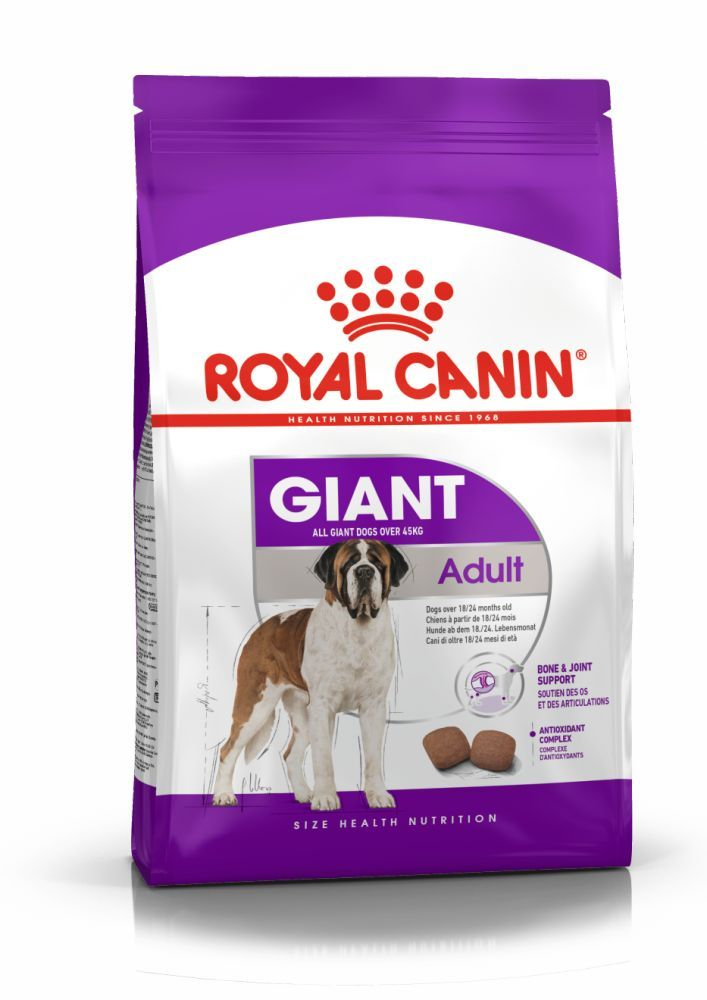
As with many giant-sized breed dogs, Neapolitan Mastiffs are prone to digestive sensitivity, and their body weight can create stress on their joints throughout their lifetime. Neapolitan Mastiffs’ nutritional needs then should include high quality protein and a balanced supply of dietary fibre to help promote optimal digestibility, as well as glucosamine, chondroitin, and antioxidants to help support the health of their bones and joints. A formula enriched with omega-3 fatty acids, such as EPA-DHA, will help maintain healthy skin. An adapted taurine content is also important to support healthy heart function.
It is important to avoid feeding Neapolitan Mastiffs human foods or fatty snacks. Instead, reward them with kibble taken from their daily meal allowance, and strictly follow the feeding guidelines written on the package.
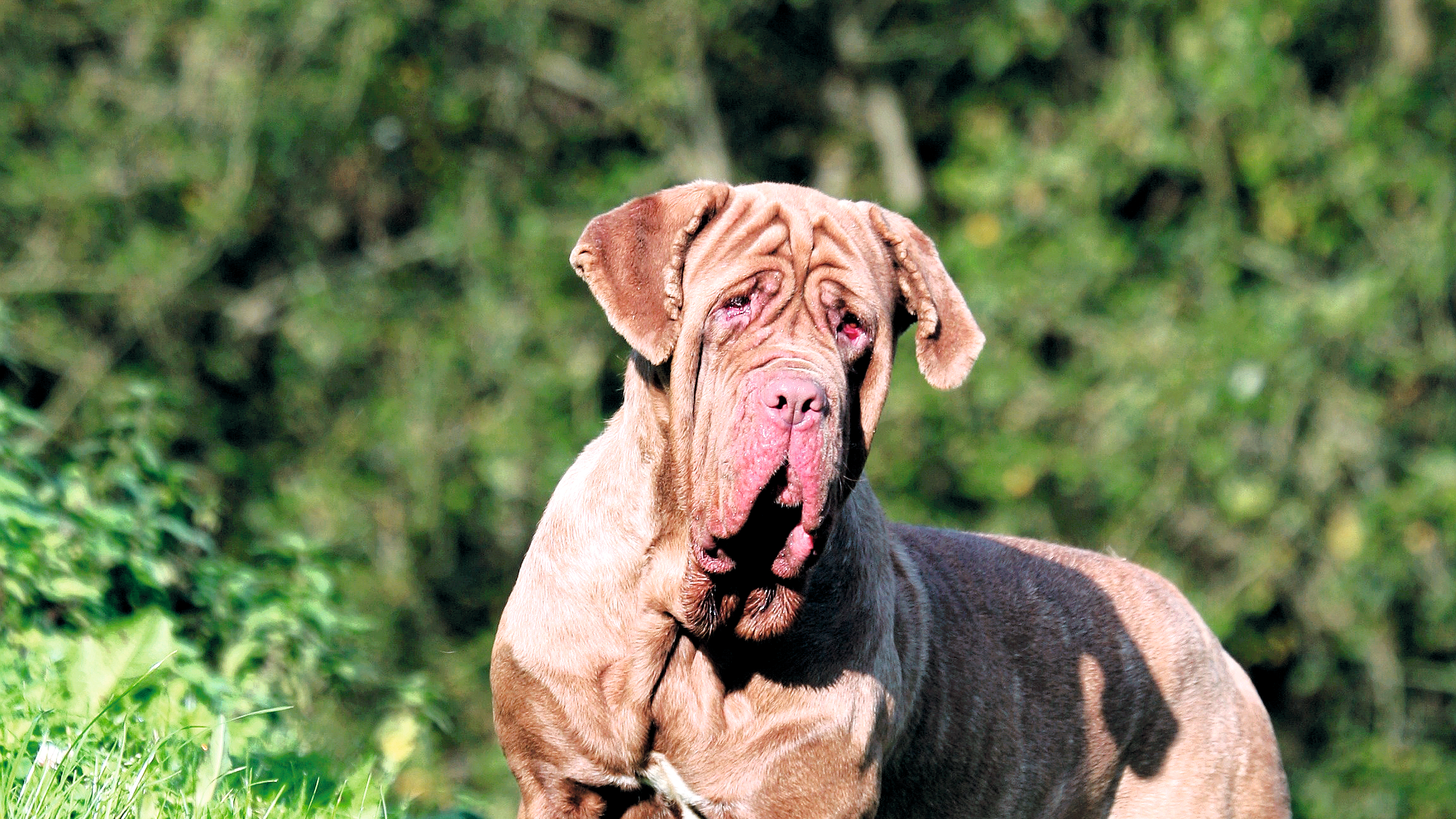
Caring for your Neapolitan Mastiff
Grooming, training and exercise tips
7/7
All about Neapolitan Mastiffs
Neapolitan Mastiffs are not known to be aggressive, and once trained get on well with their humans. However, without proper socialisation from a young age they can be wary of other dogs and strangers. All dogs need firm, consistent training from puppyhood, but with a breed of this size making sure your dog is well-behaved is even more important.
Yes! As long as you have space to accommodate these outsize canines, their placid and affectionate natures make them ideally suited to family life. Once trained, Neapolitan Mastiffs are known to be gentle with children, although like any other breed, especially big ones, they should not be left alone with them.
Suggested Breeds
Read more on this topic
- Veterinary Centers of America https://vcahospitals.com/;
- Royal Canin Dog Encyclopaedia. Ed 2010 and 2020
- Banfield Pet Hospital https://www.banfield.com/
- Royal Canin BHN Product Book
- American Kennel Club https://www.akc.org/
Like & share this page